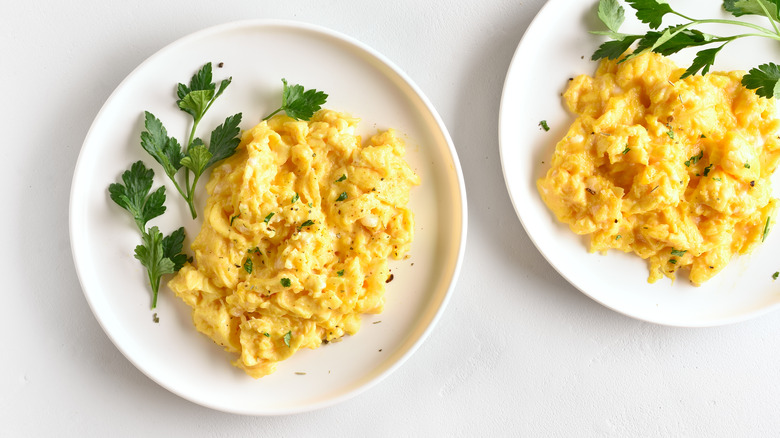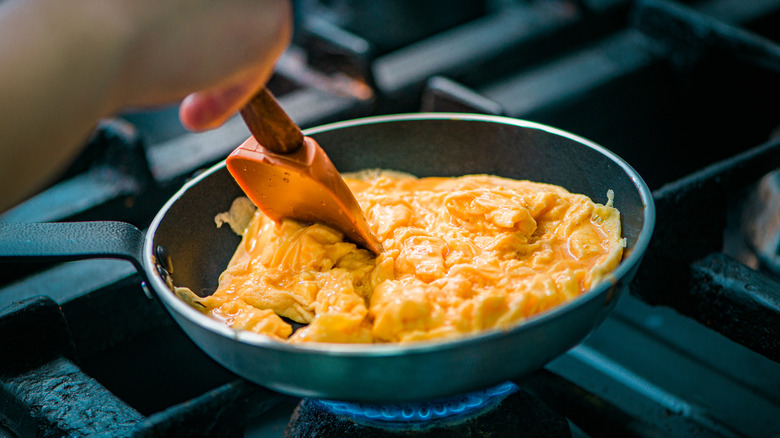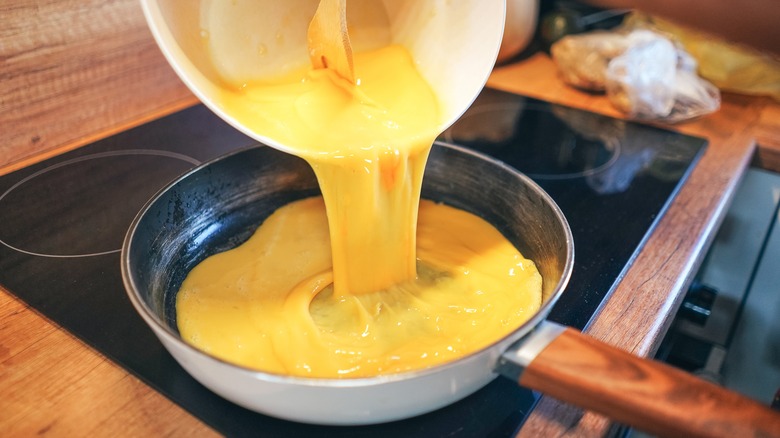Why French And American-Style Scrambled Eggs Are Considered Different
If you're making eggs for breakfast, the first thing you have to decide is how you want to cook them. You may think the options are limited to scrambled, fried, hard-boiled, or poached, but when it comes to scrambled eggs there are two variations to consider — American and French.
Both American and French-style scrambled eggs involve beating eggs until the yolks and whites are combined, then pushing the mixture around in a pan as it cooks, thus creating a scramble. The main difference between the two is the texture. American-style scrambled eggs feature a firmer texture with larger chunks of egg. French-style scrambled eggs on the other hand have a more delicate, saucier consistency with smaller curds.
Despite having contrasting textures, both styles of scrambled eggs still call for the same ingredients including butter, milk, and cream. So how do they end up so different? The reason lies in how they're cooked.
How French vs. American-style scrambled eggs are made
When you order scrambled eggs at a restaurant, chances are you'll be getting American-style scrambled eggs, because they can be made a lot faster. Cooking them requires higher heat than their French counterpart from start to finish. The eggs start to solidify almost as soon as they hit the pan and are cooked all the way through, resulting in a firmer texture.
French-style scrambled eggs by contrast are cooked low and slow. They start in a cold pan. To prevent the eggs from firming up too fast, the pan is taken off the stove during the cooking process, a technique Gordon Ramsay happens to be a fan of. Moreover, unlike American-style scrambled eggs, where the butter is melted in the pan at the outset, French-style scrambled eggs may call for adding chilled butter part way through cooking, which will help keep the eggs from cooking too quickly. Ultimately, you get a creamier meal.
Temperature isn't everything
While temperature is a key difference between American and French-style scrambled eggs, it isn't the only thing that sets them apart. When you cook scrambled eggs the French way, whisking the eggs as they are cooking (not just before they go into the pan) is also a crucial step. If you leave scrambled eggs alone in a pan, you'll notice that bubbles form and the eggs start to puff out. Constantly whisking them prevents this from happening, breaking down the curds and causing them to be creamy rather than fluffy.
If you were to scramble eggs over low heat according to the French method but failed to whisk them as they cooked, you'd actually end up with a more American-style texture. This is because when eggs aren't fully broken down, they will become fluffier as trapped gas and water vapor make them expand. They also form curds. But whether they're more French or American, these styles of scrambled eggs can be equally delicious.


